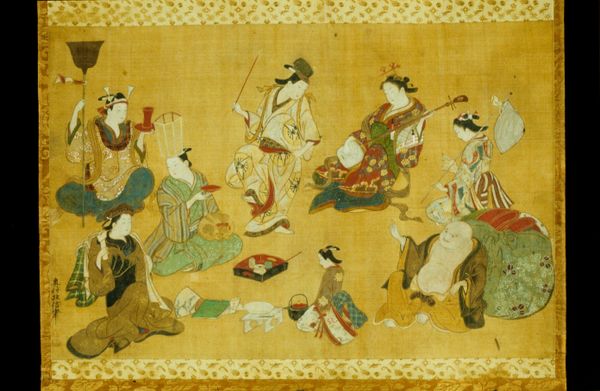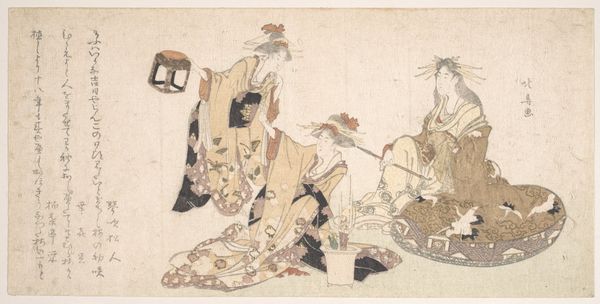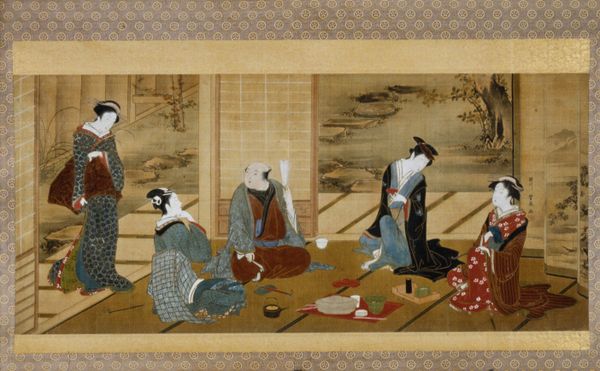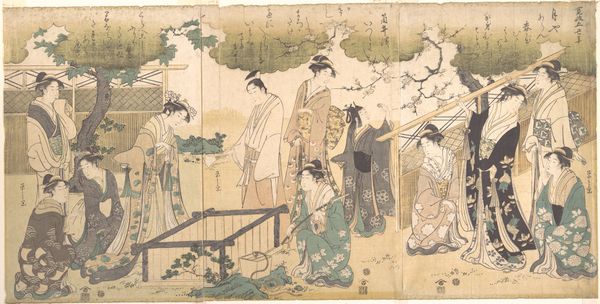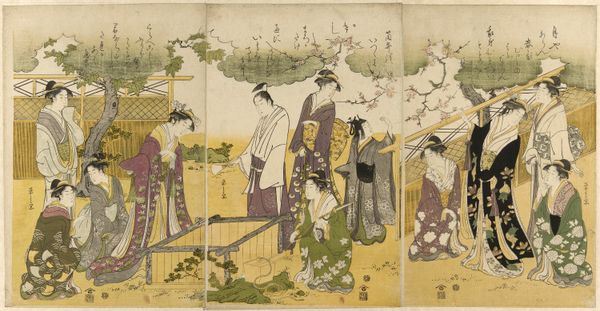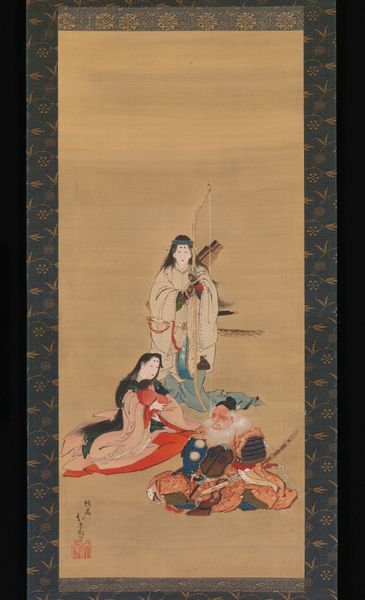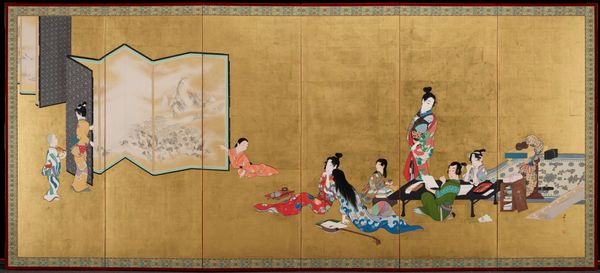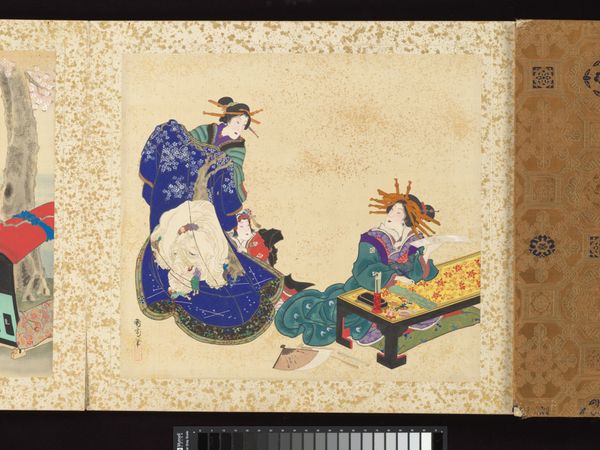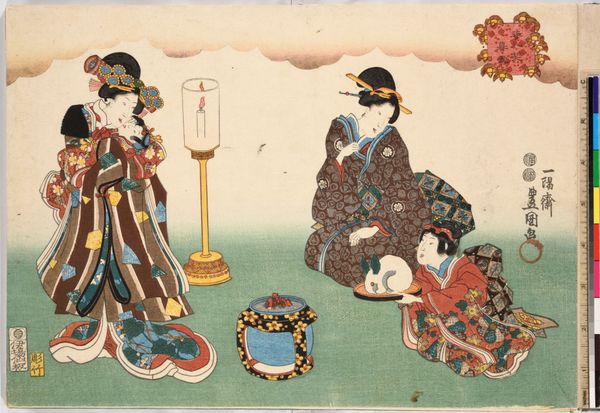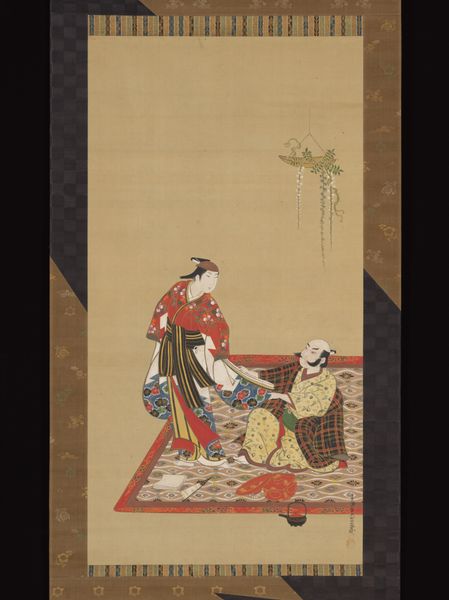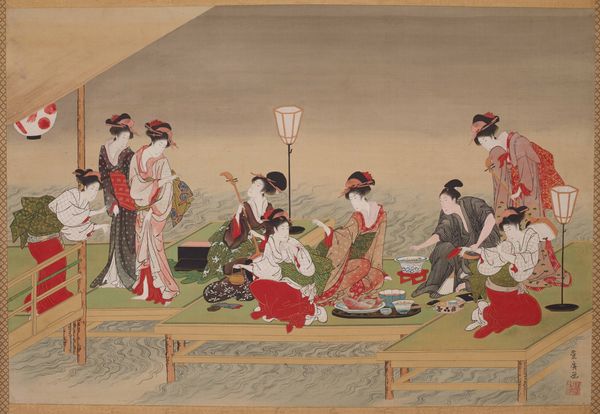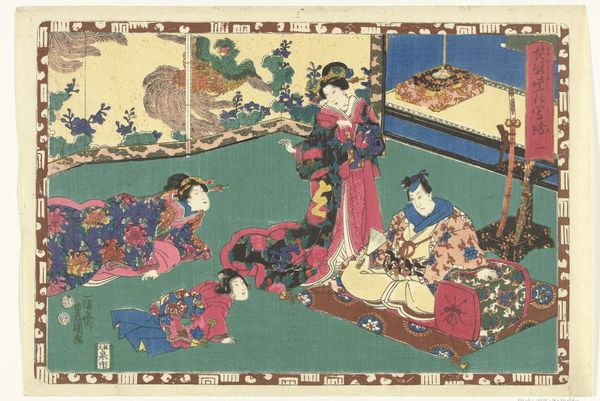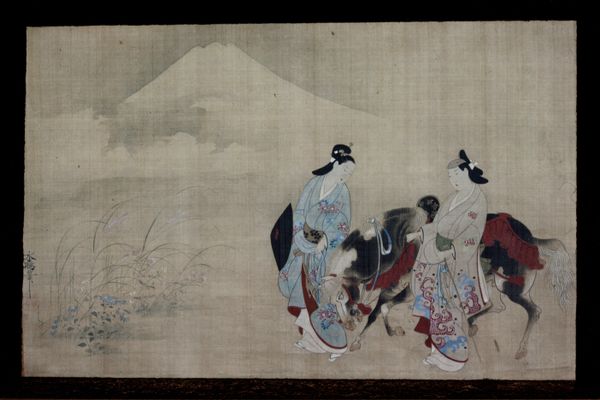
painting, watercolor
#
water colours
#
painting
#
asian-art
#
ukiyo-e
#
figuration
#
watercolor
#
genre-painting
Dimensions: Image: 15 3/8 × 20 3/4 in. (39.1 × 52.7 cm) Overall with mounting: 47 3/4 × 25 3/4 in. (121.3 × 65.4 cm) Overall with knobs: 47 3/4 × 28 in. (121.3 × 71.1 cm)
Copyright: Public Domain
Curator: Right now, we're looking at Teisai Hokuba's "Five Beauties," painted around 1840. It’s a watercolor painting that lives here at the Met. Editor: It's strikingly tranquil. Almost static, in a way. They're posed, yes, but more than that it is as though they have all exhaled the same sigh. What do you notice first, in terms of compositional elements? Curator: For me, the negative space screams for attention! So much of that lovely off-white, allowing our eyes to linger on these five figures. Hokuba invites us to really sit with each woman as individuals. The way he composes this with that wonderful emptiness really focuses my attention. Editor: Absolutely. And this emptiness actually brings into high relief how meticulously Hokuba rendered these women's elaborate garments. Each pattern, each fold—it's almost a language in itself. We could spend ages decoding it! The work reminds me so much of a visual poem or theater, somehow. Curator: I get that! It's more than just their clothing. Consider how much the face gives to each woman. And the colors used to present these woman—especially those lovely deep reds—feel very purposeful. It’s almost dreamlike, in the kindest sense. Editor: It feels more structured. If we consider each figure's placement—notice the subtle grid that structures the piece. Hokuba manages to find such structure with all these various visual components. The almost subdued lighting and shadows also aid to the somber, perhaps pensive or relaxed mood this instills. Curator: Interesting point! You’re nudging me to rethink my first feeling of dreaminess towards an overall mood. And I enjoy having the sense I may be viewing these five figures candidly in a moment, when reality these subjects are obviously posed. Editor: It's fascinating how the visual elements can speak to one viewer so different, compared to the perspective of someone else, isn't it? The emotional charge this scene conveys becomes all that more intricate, even beautiful, doesn’t it? Curator: Definitely! We often perceive art, based off all sorts of different aspects or components. Thanks so much for exploring and engaging with me. It really makes me appreciate it even more now.
Comments
No comments
Be the first to comment and join the conversation on the ultimate creative platform.
